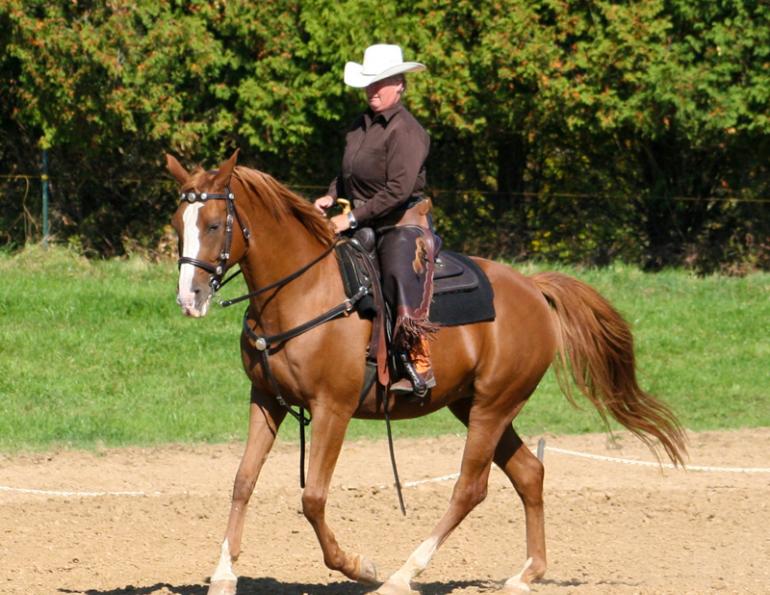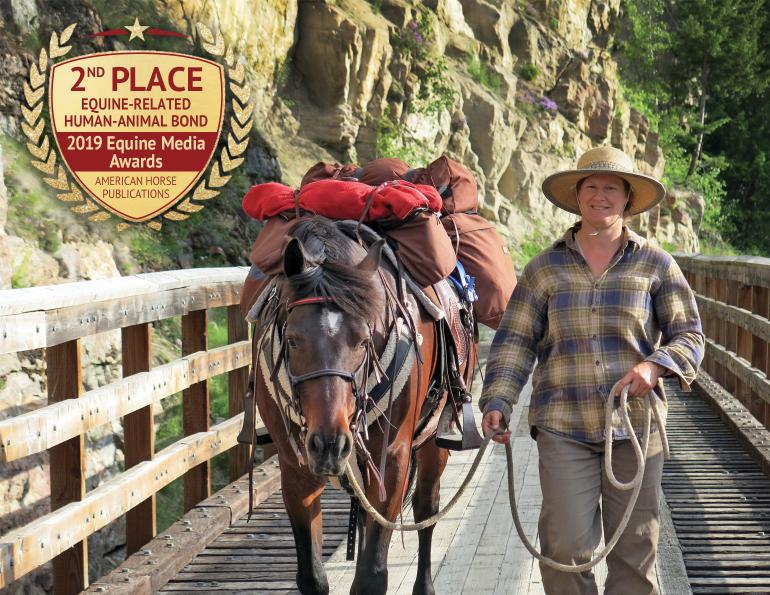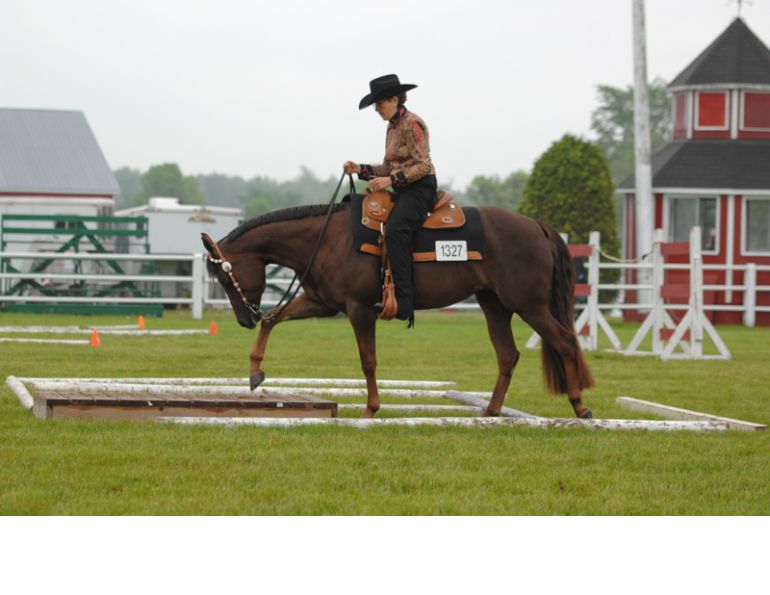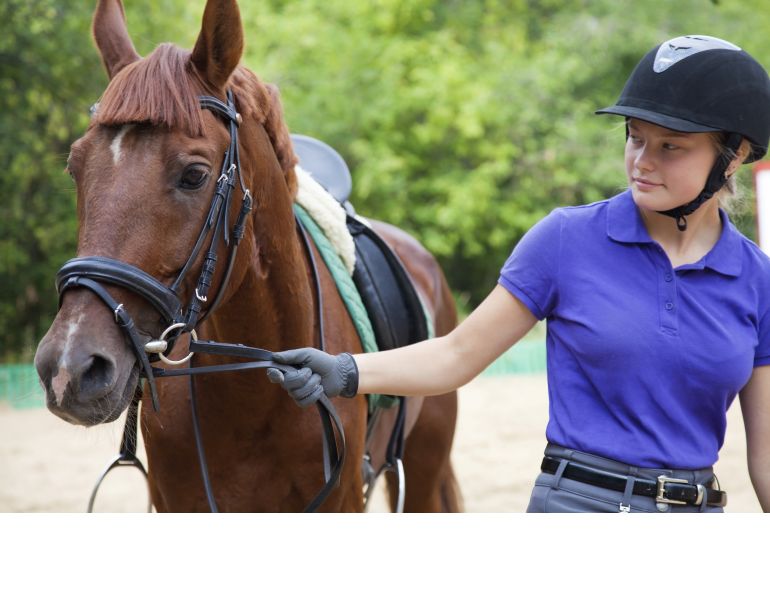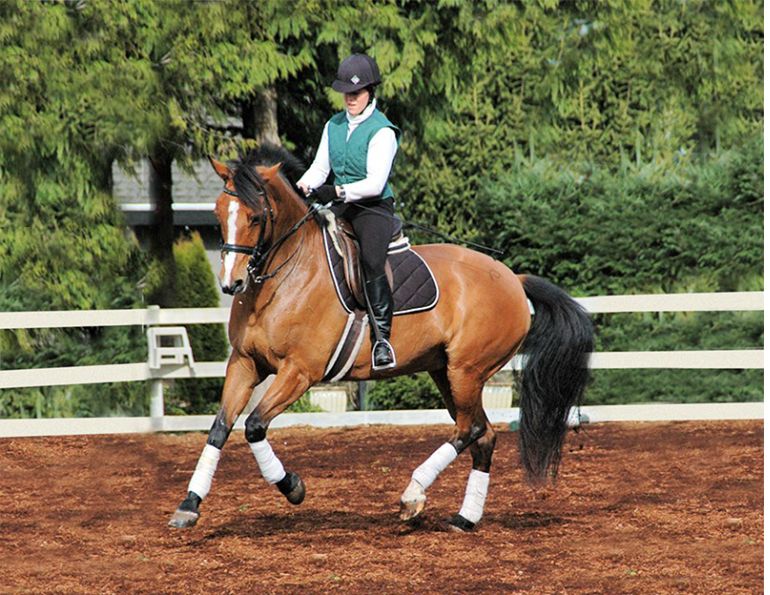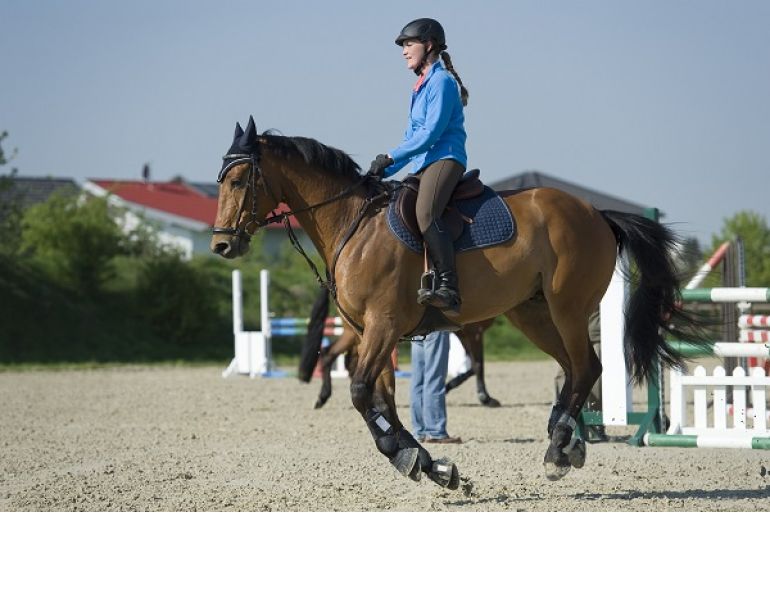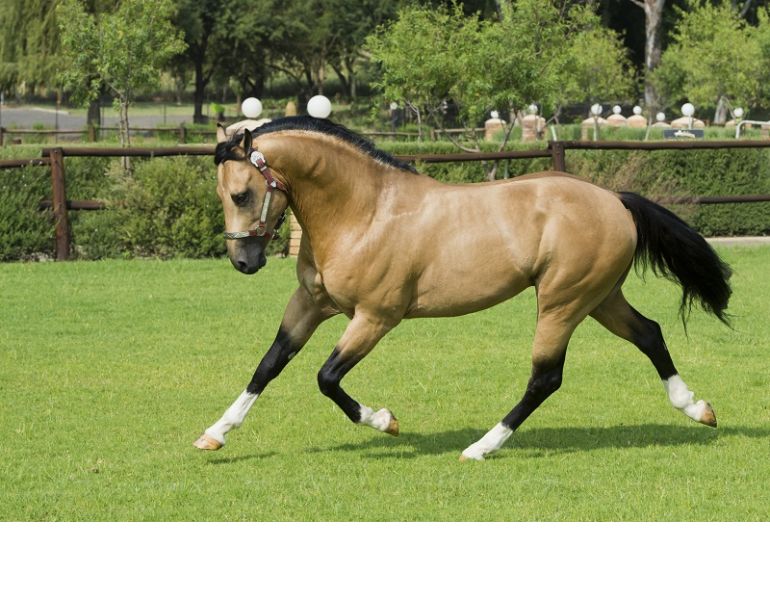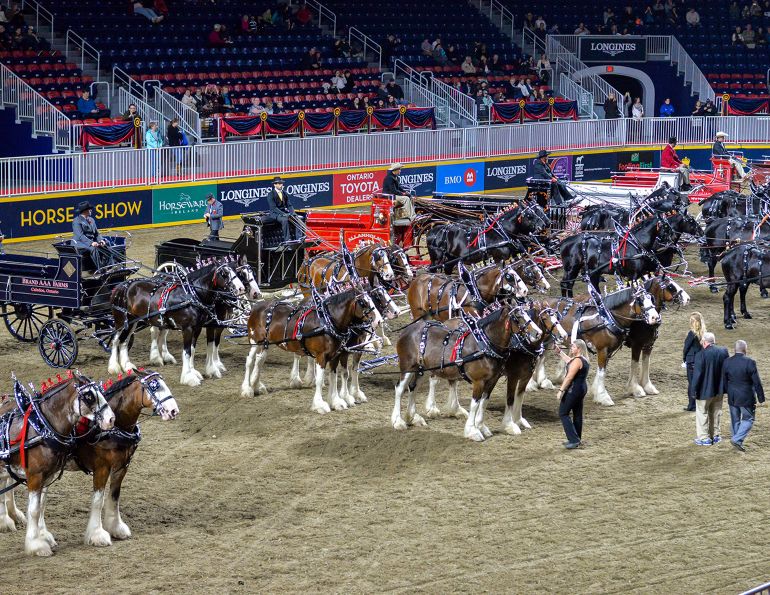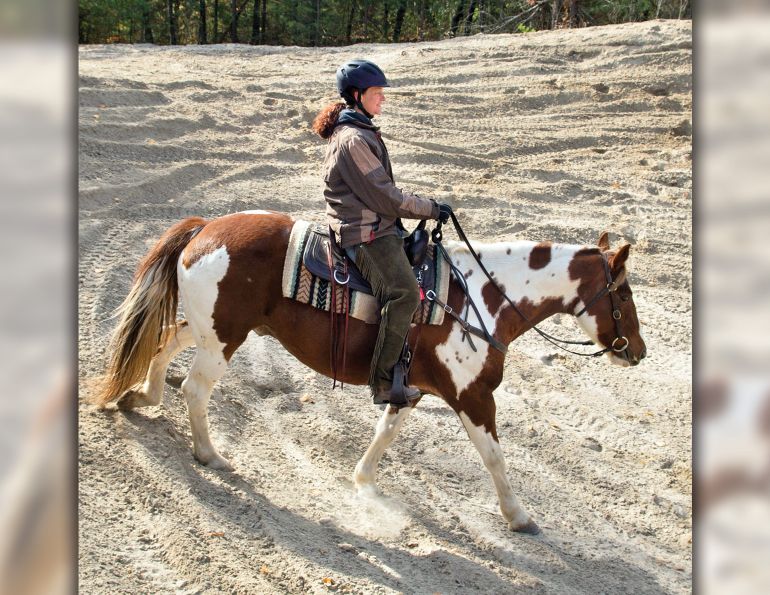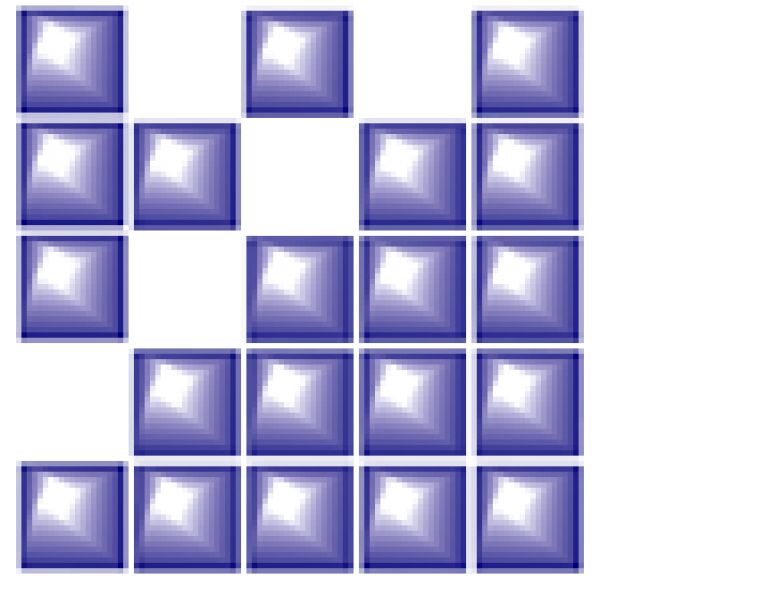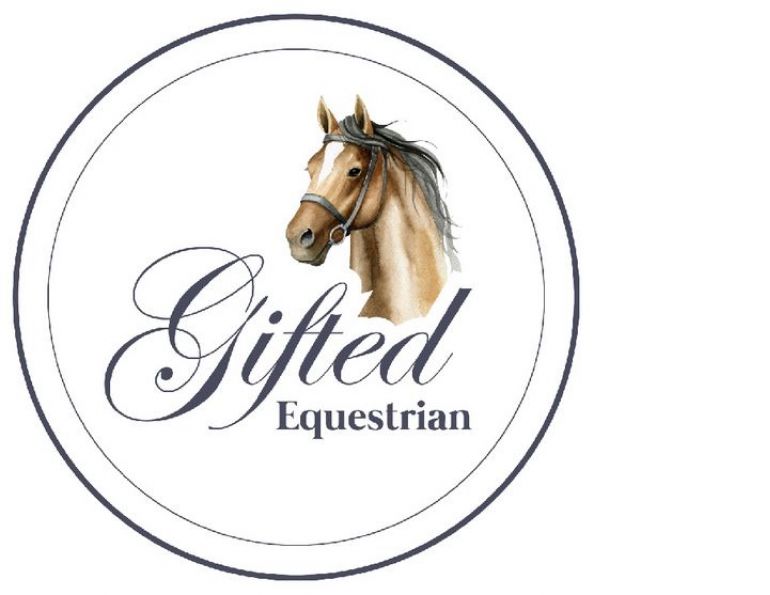A New Sport on the Move
By Margaret Evans
The launch of any new discipline in equestrian sport is always greeted with huge anticipation and curiosity. Among emerging sports, Western Dressage has taken off in a big and exciting way, promising a refreshing change, many challenges and, no matter what the end game, a better balanced, supple, and responsive Western horse.
Western Dressage isn’t simply English dressage ridden in a Western saddle. While they are similar in many ways, the Western sport is distinctly different with its own movements designed to express the highest qualities of a Western horse.
“Western Dressage is a marriage of classical dressage principles with working Western riding,” said Jec Ballou, California-based trainer, equine educator, and director of the Western Dressage Association of America. “Western Dressage began in 2010 (and was organized) by a group of enthusiasts in Colorado. It has grown at a blazing speed. Currently, there are state affiliate chapters of the main organization, Western Dressage Association of America (WDAA), in nearly every state.”
Hot on its heels came the Canadian organization.
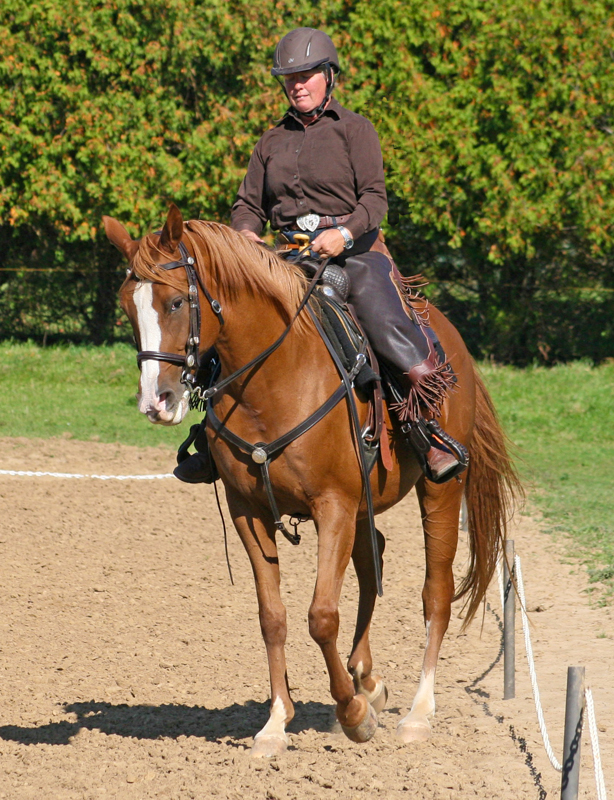
Elaine Ward, WSDAC president, performing shoulder-in with KF Almaz, an Arabian/Trakehner cross mare. Photo: Les Norris.
“The Western Style Dressage Association of Canada (WSDAC) was formed in the fall of 2011,” said Elaine Ward with Kirkridge Farm in Lynden, Ontario, and WSDAC president. “We are an International Alliance Partner with the WDAA. There are a few nuances that are different in our rule book but the goals are the same. Western dressage is now recognized with the United States Equestrian Federation (July 2013) as an official discipline.”
The slight change in name to Western Style Dressage was due to a distinction requirement when registering as a non-profit organization with the Government of Canada. Ward said that the name “Western Dressage” was too similar to dressage in Western Canada and they needed a more descriptive title. Currently, WSDAC has its own rule book for 2014, but in 2015 the organization will be using the USEF/WDAA rule book.
“We did not receive the licensing agreements for the rules soon enough to use the USEF rules,” said Ward. “(But) we have the license agreement for the tests in Canada from WDAA.”
For the record, the term Cowboy Dressage is not a dressage discipline in itself but a registered trademark owned by a California trainer and based on that individual’s brand of training.
In British Columbia, Horse Council BC (HCBC), at the request of its member clubs, developed a full test booklet for Western Dressage and added the discipline to its rulebook for provincial competition. HCBC will be offering Western Dressage in open classes at their Heritage Circuit finals in July.
According to the WSDAC, the objective of the discipline is the correct development of the horse so that it becomes an athlete that is a pleasure to ride, and works in harmony with its rider. The result is a horse that is calm, supple, loose, balanced, flexible, confident, and willing to perform the correct basics with little effort.
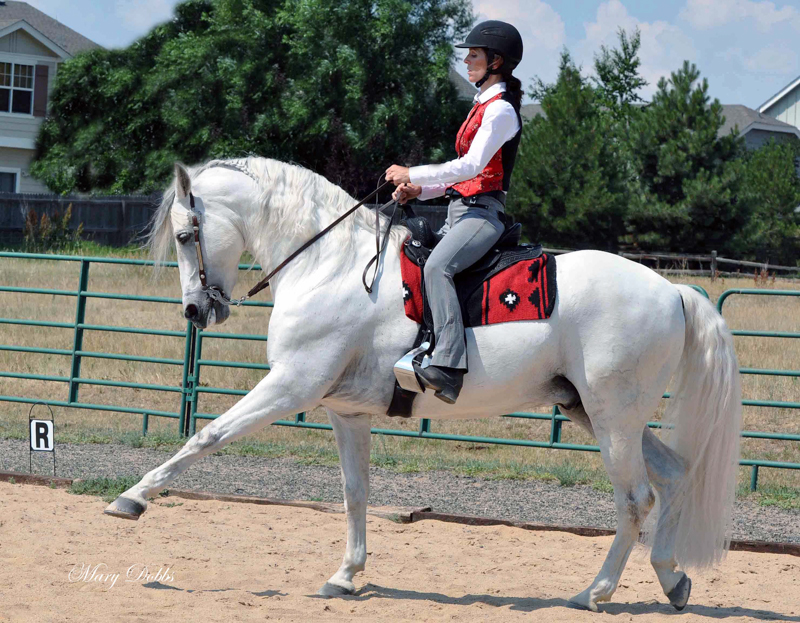
Jec Ballou, California-based trainer, equine educator, and director of the Western Dressage Association of America, demonstrates Spanish Walk. Photo: Mary Dobbs
The dressage tests are performed in a lettered arena layout similar to English dressage but the requirements at each level differ.
“There are more tests available to allow for smaller increases in technical difficulty,” said Trish Hyatt, coach and trainer based in Ladysmith, B.C. “Also, Western Dressage tests contain some specifically Western manoeuvres. The turn on the forehand, which is not found in English tests, is included as many Western horses will require this move to work trail obstacles. Also, (the) turn on the haunches and backing up are introduced sooner than in English dressage for the same reason.”
Ballou said that the scoring system is the same as for English dressage and, at this point, Western Dressage utilizes licensed dressage judges.
“However, as of 2015, the Western Dressage Association will begin conducting its own training and licensing of judges solely for Western Dressage,” said Ballou. “Licensed dressage judges will still be welcome to participate of course, but judging training will also now be available to all professionals working in the industry including breed judges, trainers, and other discipline judges. I believe as time goes by, we will begin to see great creativity among the Western Dressage freestyle tests and the patterns will reflect the maneuverability and strength of a working Western horse as opposed to the modern traditional dressage horse.”
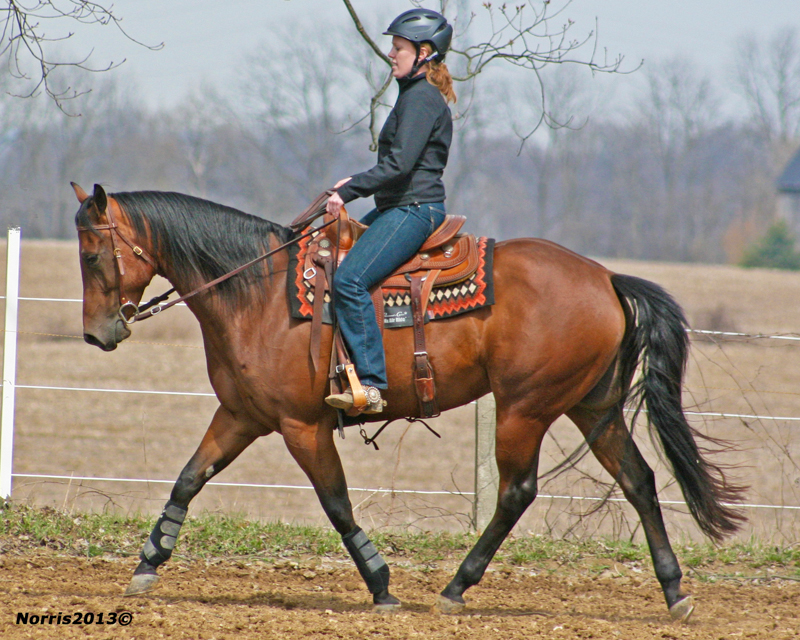
Jen Postma, riding Harley in working trot, is the 2013 Ontario Extreme Cowboy Champion pro and non-pro rider. She is using Western Dressage to improve her ride. Photo: Les Norris
Needless to say, competitors ride in Western tack and attire.
“Western dress is traditional Western show attire,” said Hyatt. “It does not have to be fancy, just good clean working attire. Helmets are mandatory at all Equine Canada sanctioned dressage competitions and are highly recommended to be worn all the time. Horses may be ridden one- or two-handed in snaffle or curb bits. In addition, bosals and bitless bridles are acceptable as are native and national bridles. There are no age restrictions on bits.”
Hyatt recommends consulting the rule book for any tack exemptions. She expects that, down the road, the rule regarding curb bits may change but currently the use of the bit at all levels was permitted to make the sport accessible for all, especially since many riders may have only ridden with a curb bit. The founding directors did not want a rule to be interpreted as exclusionary or discriminatory.

Jec Ballou performs piaffe. Photo: Mary Dobbs
“At this time, curb bits are allowed at all levels, though we anticipate changing that rule in the near future to mandate that all lower levels be ridden in a snaffle bit,” said Ballou.
Ballou served on the WDAA rules committee writing the guidelines. She said that, in terms of the rider’s apparel, it was more important to emphasize the “working Western” standard of dress rather than encouraging riders to get carried away with glittery, sparkly outfits. To keep the priority on the training and keep everyone on a level playing field in the judge’s eye, the emphasis should be on classic understatement rather than fancy outfits. Clothing cluttered with bling can be very distracting for a dressage judge who needs to concentrate on the horse’s muscle movements and gaits.
Judges are focused on the fundamentals that include the freedom and regularity of the gaits, harmony, lightness, ease of movement and transitions, lightness of the forehand, and engagement of the hindquarters originating from a lively impulsion. They also look for acceptance and light contact with the bit and submissiveness without tension or resistance.
The discipline is ideal for any horse, pony or mule, and any breed including gaited breeds. WDAA is currently waiting for the gaited horse associations to put forth rule amendments specific to their way of moving. All horses and riders benefit from the training whether the rider wishes to continue exclusively in dressage or focus on other Western competitions.
“Western Dressage is being embraced by Western riders,” said Ward. “In my experience I have had very few traditional dressage riders making the cross-over to Western Dressage. Riders have discovered that the concepts of Western Dressage can be used to improve other classes such as extreme cowboy, horsemanship, and games to name a few. Western Dressage is about developing an athlete, the same way as traditional dressage does.”
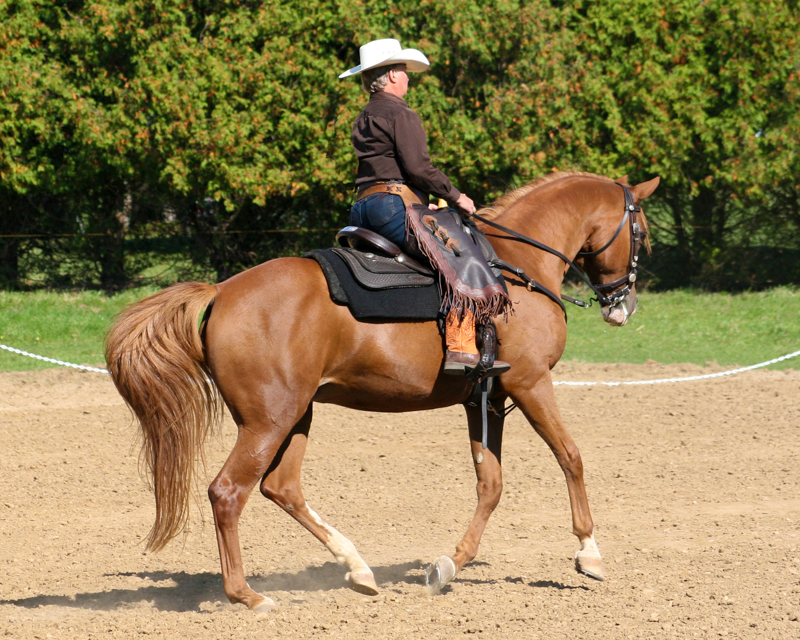
The objective of Western Dressage is the correct athletic development of the horse so that it becomes calm, supple, loose, balanced, flexible, confident, and willing to perform the correct basics with little effort. Elaine Ward demonstrates bending in working canter. Photo: Les Norris
Launching a new sport means bringing trainers and judges up to speed and WSDAC is offering clinics to address this need. Hyatt attended the Train the Trainer’s clinic this past winter in North Carolina. She said it was very well presented and informative, with lots of opportunities to ask questions as well as network with like-minded individuals from both Western and English backgrounds.
“We are offering two WDAA Train the Trainer™ clinics this year,” said Ward, one of which was held in April. “(The other will be held in) Red Deer, Alberta, in September. We have been working tirelessly with promotions through Facebook, trade shows, and clinics. We welcome everyone to contact us if they have any questions, or would like to find out about activities and shows throughout Canada. WSDAC is in discussion regarding a competition program to develop judges and stewards.”
She said that the organization is already seeing a growth in the inclusion of classes into the Equine Canada shows under the miscellaneous category and groups are working on developing dedicated competitions.
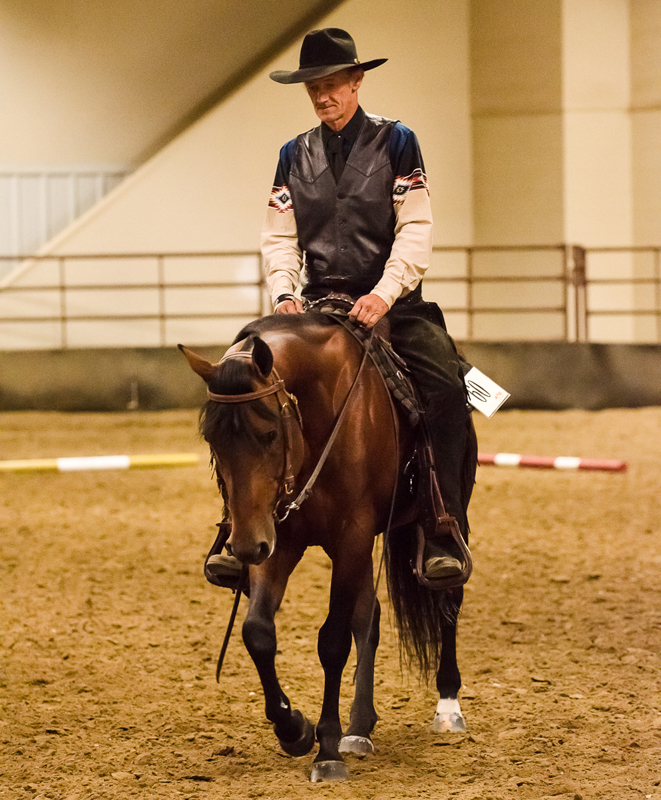
Kelly Adams of K&K Training Stables, Mortlach, SK, with Quarter Horse gelding, Hotrodder Mike, won the Western Style Dressage class at the Autumn Gold Open Horse Show in Saskatoon, SK, in September 2013. Photo: ©Bradford Photography
“The WDAA has already developed the World Western Dressage Championships and it would be nice for Canada to have a National Championship too,” said Ward. “But again, we are finding that the majority of riders are not leaning toward competitions but using Western Dressage as a way of riding in the recreational sense. The distance that one would have to travel could also pose issues.”
According to Ballou, since 2008 in the United States, dressage shows have seen a measurable decline in entries and, in some cases, a huge drop in participation. As a result, shows are adding a roster of Western Dressage classes in order to attract a greater number of entries. So far, this is the way most Western Dressage shows are being conducted. Right now, there are very few stand-alone shows. But that move has increased the interest of a wider range of riders eager to try out the new discipline. For venue operators, it provides viable options as a way to fill up shows and keep them running.
In British Columbia, Hyatt said that quite a lot of people from different areas are looking to host Western Dressage clinics. There is clearly a lot of interest.
“This is a growing discipline in Canada and we are lucky to be in alliance with the Western Dressage Association of America, which has been around a little longer and has training programs in place to help coaches, trainers and judges understand the details,” said Hyatt. “Upcoming clinics can be found on the WSDAC website and Facebook pages, and there are affiliates and trainers listed on the website as well.”
For many, Western Dressage offers extended benefits. More senior riders are showing an interest since this new discipline offers a refreshing and different challenge in a safe environment with progression in small, safe increments. Stale, ring-sour or older horses constantly shown in the same classes may respond to the movements and challenges of Western Dressage as something that is different and stimulating. Horses, like humans, need variety in their activities to stay fresh.
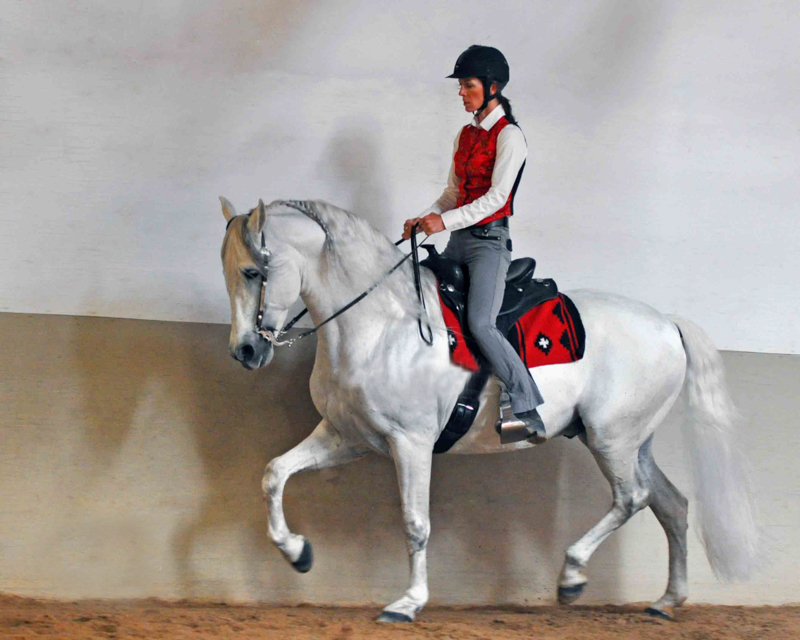
Western Dressage is not simply English dressage ridden with Western tack. Despite similarities, the Western sport is distinctly different with its own movements designed to express the highest qualities of a Western horse. Photo: Mary Dobbs
“Numerous show horses (Western pleasure, Western trail, etc.) have either gotten older or burned out or bored,” said Ballou. “Now (they) have a new venue that is limitless in terms of its training elements and challenges and rewards. It has provided an exciting new future for numerous horses and riders who have burned out on riding circles around the show ring.”
One of the profound beauties of dressage training is that it improves any other discipline a rider is engaged in.
“Due to its progressive nature there is less risk of injury to the horse while it builds the necessary strength, suppleness, and relationship with the rider that will benefit other chosen disciplines,” said Hyatt. “At the same time the rider learns more about not only working with their horse in a more cooperative way but understanding how their horse should move and how to improve that movement for longevity.”
For more information:
www.westerndressageassociation.org
Main photo: Less Norris - More tests are available in Western Dressage than in its English counterpart, to allow for smaller increases in technical difficulty.



